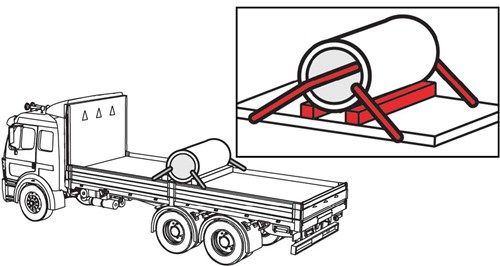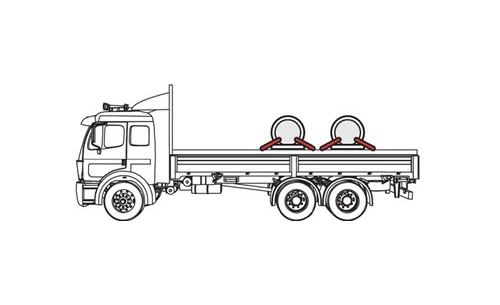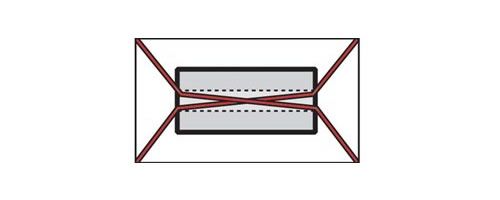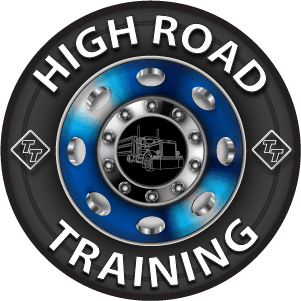Note: Your are not logged in. We can not keep your scores or track your progress unless you Register and Log In
Securing Coils Transported With Eyes Crosswise on a Vehicle with Anchor Points
There are three requirements for coils transported with eyes crosswise:

Prevent the coil from rolling
Attach one tie-down forward.
Attach one tie-down rearward.
Requirements for securing a single coil
Prevent the coil from rolling by supporting it:
- Timbers, chocks, or wedges held in place by coil bunks or similar devices to prevent them from coming loose.
- A cradle (for example, two hardwood timbers and two coil bunks) that is restrained from sliding by:
- Friction mats under the cradle.
- Nailed wood blocking or cleats.
- Placing a tie-down around the front of the cradle.
- The support must:
- Support the coil just above the deck.
- Not become unintentionally unfastened or loose in transit.
The use of nailed blocking or cleats as the sole means to secure timbers, chocks or wedges, or a nailed wood cradle, is prohibited.

One tie-down forward
Attach at least one tie-down through the eye of the coil to restrain against forward motion. If possible, the angle between the tie-down and the deck should be less than 45.
One tie-down rearward
Attach at least one tie-down through the eye of the coil to restrain against rearward motion. If possible, the angle between the tie-down and the deck should be less than 45.

Note: Attaching tie-downs diagonally through the eye of a coil to form an X-pattern when viewed from above the vehicle is prohibited.
Note: If a tie-down is used around the front of the cradle, it does not count towards the aggregate WLL for tie-downs through the eye of the coil.
Multiple-Choice Questions:
All of the following are requirements for transporting coils with eyes crosswise except:
- Attach one tiedown forward
- Prevent the coil from rolling
- These are all requirements
- Attach one tiedown rearward
There are three requirements for coils transported with eyes crosswise:

Prevent the coil from rolling
Attach one tiedown forward.
Attach one tiedown rearward.
Methods to keep a cradle from sliding include:
- Nailed wood blocking or cleats.
- Friction mats under the cradle.
- Placing a tiedown around the front of the cradle.
- These can all be used.
Requirements for securing a single coil
Prevent the coil from rolling by supporting it:
- Timbers, chocks, or wedges held in place by coil bunks or similar devices to prevent them from coming loose.
- A cradle (for example, two hardwood timbers and two coil bunks) that is restrained from sliding by:
- Friction mats under the cradle.
- Nailed wood blocking or cleats.
- Placing a tiedown around the front of the cradle.
- The support must:
- Support the coil just above the deck.
- Not become unintentionally unfastened or loose in transit.
Complete!
You can Return To The Table Of Contents







 TT On Facebook
TT On Facebook